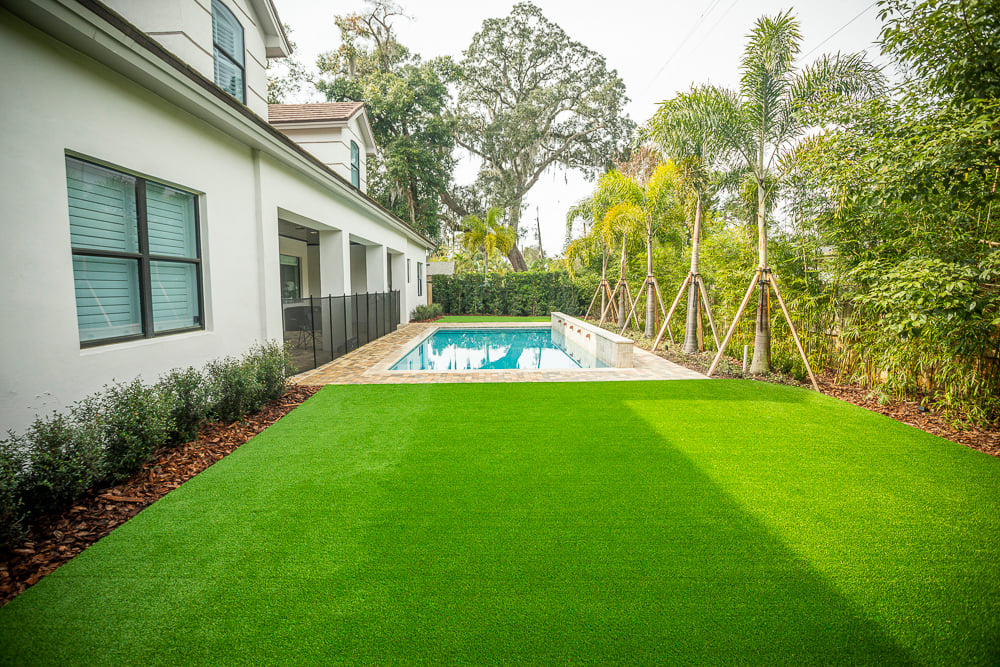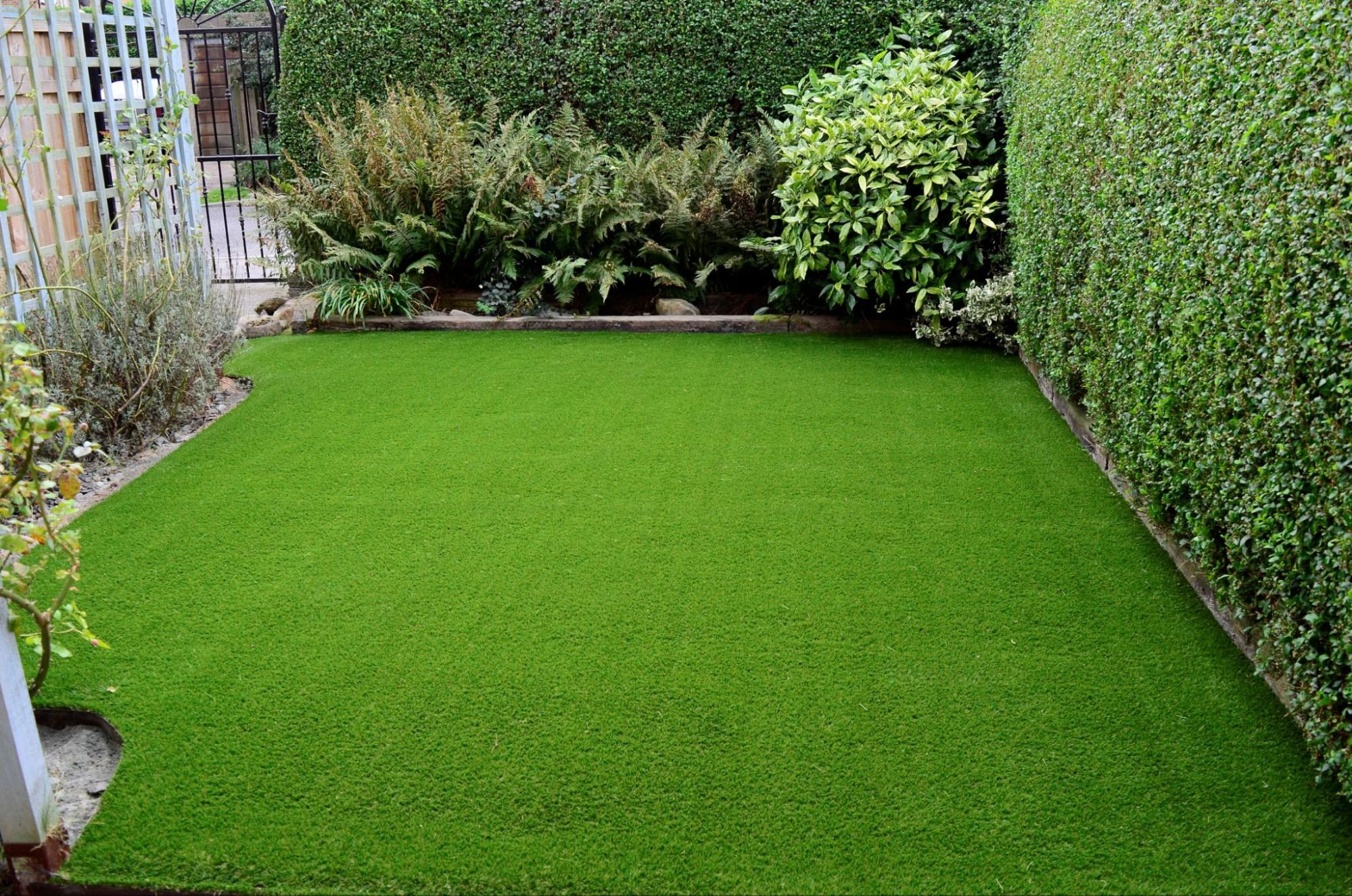Professional Arizona Turf Suppliers Offering a Lifelike Lawn Alternative
Professional Arizona Turf Suppliers Offering a Lifelike Lawn Alternative
Blog Article
See Why Homeowners Prefer Artificial Lawn for Lasting Landscape Design Practices
As home owners progressively focus on sustainability in landscaping, fabricated turf has emerged as a compelling choice to standard grass. What stays to be discovered is the full range of advantages that synthetic lawn can provide to home owners and the environment alike.
Water Preservation Conveniences
Among the most considerable benefits of synthetic grass is its duty in water conservation. Standard yard lawns call for substantial amounts of water to keep their lush appearance, often causing overuse of neighborhood water resources, particularly in deserts. In contrast, man-made lawn eliminates this demand completely, as it does not require watering. This not only preserves water yet likewise reduces the strain on local water supply, especially during drought conditions.
Furthermore, the setup of synthetic grass can add to an extra lasting landscape. Homeowners can significantly lower their water bills, permitting reallocation of sources to other ecological efforts or home uses. Additionally, synthetic grass is developed to endure different climatic problems without the requirement for additional watering, making it an excellent selection for areas dealing with water scarcity.
The environmental advantages expand past immediate water savings. By reducing water intake, man-made grass helps to mitigate the effects of climate modification, maintaining essential ecological communities that are endangered by extreme water removal. As sustainable landscaping techniques get traction, synthetic grass emerges as a responsible option for home owners looking for to create environmentally friendly exterior areas.
Reduced Upkeep Initiatives
Synthetic grass considerably reduces maintenance initiatives compared to typical turf yards. With fabricated lawn, homeowners can get rid of the time-consuming tasks connected with natural landscape design, such as mowing, fertilizing, and weeding. This not just saves beneficial time but likewise reduces physical labor, making yard treatment available for people of all ages.
Traditional lawns need constant cutting to preserve a cosmetically pleasing elevation, whereas artificial turf remains regularly lush without the need for cutting. Furthermore, house owners no much longer require to use pesticides or fertilizers, which are commonly called for to maintain all-natural lawn healthy and balanced.
Moreover, synthetic grass is resistant and sturdy, needing very little upkeep beyond periodic cleaning and rinsing to eliminate particles. This convenience of upkeep enables house owners to enjoy their outdoor rooms without the consistent worry of upkeep, providing even more time for leisure and family tasks. Inevitably, the minimized maintenance efforts associated with artificial lawn make it an attractive option for those looking for a low-maintenance, aesthetically appealing landscape.

Ecological Impact Decrease
There is an expanding recognition of the environmental advantages connected with synthetic grass, specifically in terms of water conservation and decreased chemical use. Typical grass require significant quantities of water, specifically in drought-prone regions, bring about increased strain on local water resources. In contrast, synthetic grass eliminates the need for irrigation, drastically reducing water consumption and promoting sustainability.
Additionally, conventional yard maintenance commonly entails the application of herbicides, fertilizers, and pesticides, which can contribute to dirt and water air pollution. Synthetic grass minimizes this ecological danger by calling for very little maintenance and essentially getting rid of the need for hazardous chemicals. This not only enhances dirt health and wellness however likewise shields neighborhood ecological communities from hazardous overflow.
Furthermore, the production of all-natural yard yards usually involves the use of nonrenewable fuel sources for trimming and landscape design equipment, further adding to greenhouse gas discharges. By choosing artificial lawn, house owners can substantially reduce their carbon footprint connected with yard care tasks.
Aesthetic Appeal and Convenience
Along with its environmental benefits, synthetic grass offers considerable visual appeal and adaptability for landscaping. Home owners can achieve a rich, environment-friendly appearance year-round, getting rid of the seasonal variations commonly associated with all-natural yard. This consistent visual not just boosts the visual charm of a property but likewise adds to a sleek and well-maintained appearance.
Moreover, synthetic grass is offered in a selection of designs, colors, and textures, enabling modification to match private preferences and layout themes - Arizona turf. Whether utilized in residential yards, commercial spaces, or entertainment areas, it can seamlessly incorporate into diverse landscape design styles, from modern-day minimal to rich tropical settings
The convenience of fabricated lawn extends beyond plain look; it can be installed in different places, including rooftops, outdoor patios, and even interior spaces, creating chances for special landscaping remedies. Additionally, it is suitable for a series of tasks, from kids's play areas to pet-friendly settings, offering performance without endangering style.
Eventually, the visual charm and flexibility of synthetic Get the facts grass make it an attractive choice for home owners seeking lasting landscaping options that do not Arizona turf sacrifice charm for ecological responsibility.

Long-Term Expense Cost Savings
One of the most compelling benefits of synthetic turf is its possibility for long-term expense financial savings. Unlike natural yard, which requires routine maintenance-- including mowing, watering, fertilizing, and pest control-- fabricated lawn considerably lowers these continuous expenses.
Furthermore, synthetic grass has a life expectancy of 15 to 25 years, depending on its top quality and use. This durability minimizes replacement expenses, making it a more affordable selection in the long run. In addition, the first investment in artificial turf can usually be redeemed through the savings accrued gradually.
While the ahead of time cost might appear greater contrasted to sod installment, the collective cost savings from minimized upkeep and water use commonly exceed these initial expenses. Inevitably, the fostering of fabricated grass not only advertises a lasting landscaping remedy however additionally uses home owners a financially wise advice option that straightens with long-term budgeting objectives.
Conclusion
Synthetic lawn emerges as an engaging alternative for lasting landscaping, offering significant benefits in water preservation, reduced maintenance efforts, and lessened ecological impact. As areas progressively prioritize ecologically friendly techniques, the adoption of artificial turf stands for a progressive step towards accomplishing sustainable and resistant landscapes.
In addition, synthetic grass is designed to withstand different weather conditions without the requirement for extra watering, making it an optimal option for regions dealing with water scarcity. (Arizona artificial turf)

Man-made lawn emerges as an engaging option for lasting landscape design, using substantial benefits in water preservation, lowered upkeep initiatives, and reduced ecological influence.
Report this page